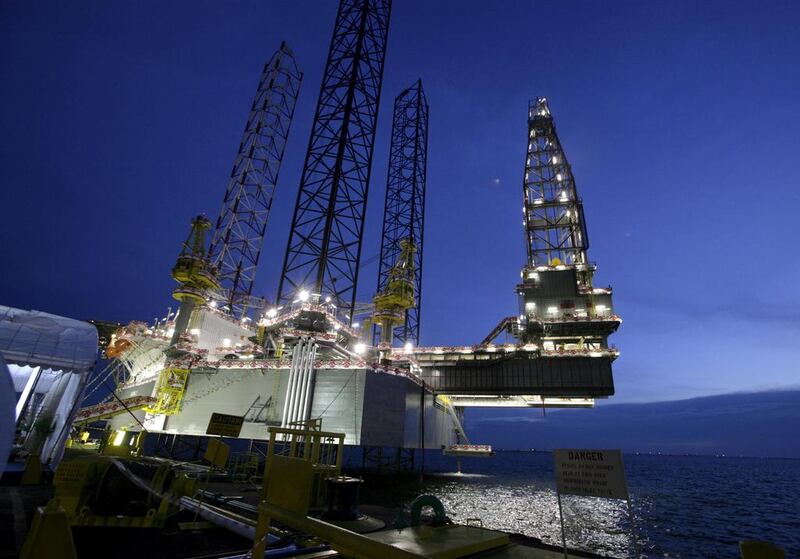Capital expenditure in the Middle East's hydrocarbon sector is set for another consecutive year of growth, registering a year-on-year rise in 2018 with planned spending largely directed towards boosting upstream operations.
This is taking place as national oil companies (NOCs) position themselves to meet a large supply deficit forming in the global oil market post-2019.
However the pace of capital expenditure expansion growth for the region, which has bucked a downturn in global investments in the oil and gas sector amid weak oil prices, will be slower than in previous years, according to BMI forecasts.
_________________
Read more:
[ Adnoc cuts production to meet Opec terms ]
[ Gulf Marine Services profits plunge on low rig utilisation ]
_________________
Investments in the region have held up, recording an 8.2 per cent year-on-year advance in 2016. This sharply contrasts with a 25 per cent decline in global spending the same year.
Crude oil prices, which fell below $30 per barrel in the first quarter of 2016, have subsequently recovered to around double that level, with the recovery set to prompt an uptick in capital spending elsewhere.
Global capex is expected to grow in 2017 and 2018, by 4.5 per cent and 4.3 per cent respectively. Capex in the Middle East region, by contrast, will increase by just 2 per cent in 2017 and 1.6 per cent the following year, according to BMI.
"The main focus – in particular over 2017 and 2018 – will remain the upstream, as the Middle Eastern NOCs look to position themselves to profit from a looming deficit in the global marketplace from 2020," BMI said.
The region, which has maintained production during the oil price downturn, will experience a year-on-year drop in output this year, largely due to the Opec and non-Opec production cut deal.
Opec producers, as well as other major exporters led by Russia, agreed in November to extend a cut of 1.8 million barrels per day to March, hoping to help stabilise the market.
BMI forecasts production to recover next year, rising by 2.1 per cent, following the expiry of the deal.
"Production targets in the region are ambitious," BMI said, adding that Saudi Arabia is investing to maintain its production capacity at around 12.5 million barrels per day, with several expansion projects in the pipeline.
The UAE meanwhile is aiming to raise its output to 3.5 million barrels a day by 2018 through a number of field expansions, and to subsequently hold production steady at this level. BMI said that the cheaper cost for producing and exporting has set the region up in a better position than elsewhere.
"This has allowed companies to front-load their spending plans to take advantage of depressed oilfield services costs," the report said.
While oil will attract the bulk of capex in the region, a part of the capex is being directed downstream, as the major NOCs pursue increasing vertical integration of their global supply chains.
Gas will also continue to take a share, according to BMI, which added that natural gas production, has become a strategic priority. It "will continue to rise over the coming years, albeit at a somewhat reduced rate".







